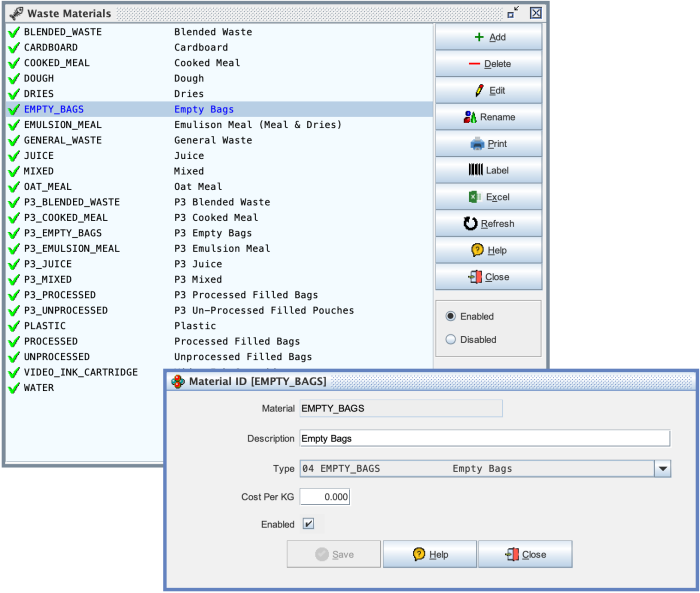Waste Materials: Difference between revisions
No edit summary |
No edit summary |
||
| (6 intermediate revisions by the same user not shown) | |||
| Line 1: | Line 1: | ||
The waste logging system has its own Materials table. This allows you to create a more generic set of materials. Let's assume you're recording waste packaging - such as cardboard. The cardboard could be from multiple sizes of box's and you wound not necessarily want to identify the exact box material code. You could therefore use a simple "one size fits all" material code for all cardboard waste. You should also note that for each material you assign it to a | The waste logging system has its own Materials table. This allows you to create a more generic set of materials. Let's assume you're recording waste packaging - such as cardboard. The cardboard could be from multiple sizes of box's and you wound not necessarily want to identify the exact box material code. You could therefore use a simple "one size fits all" material code for all cardboard waste. You should also note that for each material you assign it to a [[Waste Types | Waste Material Type]] which allows you to group "like" materials within the [[Waste Reporting|reporting module]]. | ||
[[file:Waste_Materials.png|link=|700px]] | [[file:Waste_Materials.png|link=|700px]] | ||
Latest revision as of 09:20, 1 September 2024
The waste logging system has its own Materials table. This allows you to create a more generic set of materials. Let's assume you're recording waste packaging - such as cardboard. The cardboard could be from multiple sizes of box's and you wound not necessarily want to identify the exact box material code. You could therefore use a simple "one size fits all" material code for all cardboard waste. You should also note that for each material you assign it to a Waste Material Type which allows you to group "like" materials within the reporting module.
